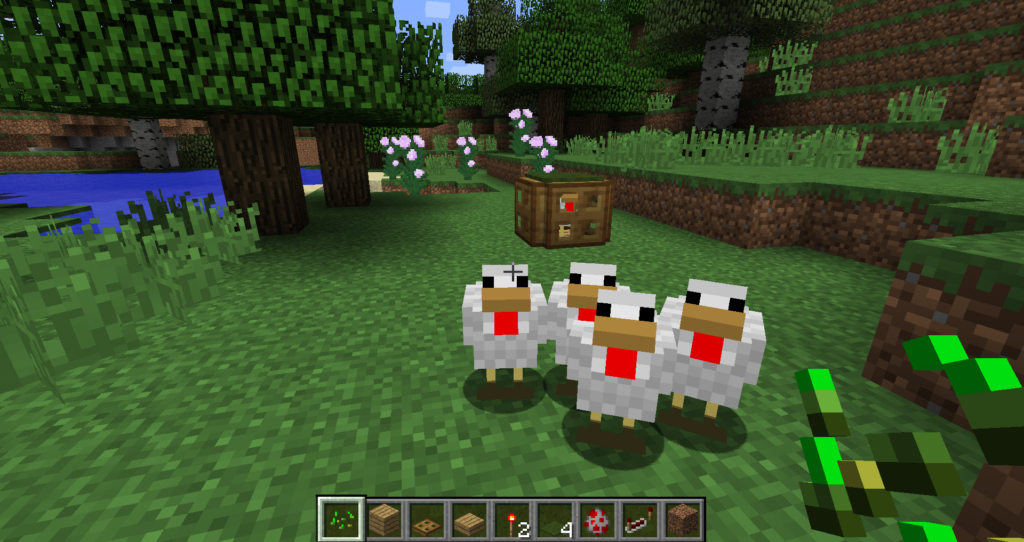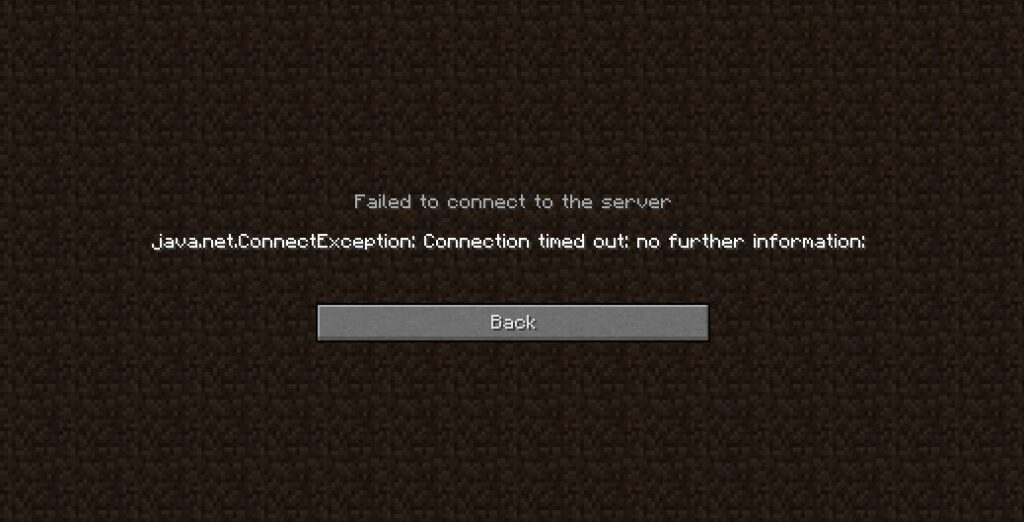The question “Does Minecraft server use TCP or UDP?” has sparked the imagination of many Minecraft enthusiasts and server owners all over.
Minecraft is the iconic sandbox game that has captivated millions of players around the world. It owes its enchanting multiplayer experiences to the intricate dance of network protocols.
The Minecraft community has been deliberating about the merits of using TCP (Transport Control Protocol) or UDP (User Datagram Protocol) for data transport in a server.
While some sources suggest that Minecraft primarily uses TCP for reliable data transmission, others argue that it can utilize both TCP and UDP for different purposes.
This article explores Minecraft’s network protocols (TCP and UDP), highlighting their impact on the gaming experience for server admins and curious players.
Network Protocols: TCP and UDP
Transmission Control Protocol (TCP)
TCP is a fundamental protocol that plays a crucial role in organizing data transfer across the internet. Here are some key characteristics of TCP:
Connection-oriented: TCP establishes a connection between two hosts before data transmission occurs. This connection is maintained until both ends have finished exchanging messages.
Reliable delivery: TCP ensures reliable and ordered delivery of data. The receiver can reassemble the data in the proper order by using sequence numbers to identify the order of bytes delivered. TCP permits the sender to retransmit lost data if any is lost during transmission.
Flow control: TCP manages flow control to prevent overwhelming the receiver with more data than it can handle. It uses a sliding window mechanism to regulate the amount of data sent at a time, based on the receiver’s capacity.
Error checking: TCP includes mechanisms to detect and recover from errors that may occur during data transmission. It uses checksums to verify the integrity of data packets and ensures that corrupted packets are retransmitted.
Congestion control: TCP employs congestion control mechanisms to prevent network congestion. It dynamically adjusts the transmission rate based on network conditions, reducing the likelihood of congestion and optimizing network performance.
Full-duplex communication: TCP supports full-duplex communication, allowing simultaneous data transmission in both directions. This enables efficient bidirectional communication between applications running on hosts.
User Datagram Protocol (UDP)
UDP is a transport layer protocol that is used for simple and fast data transmission over a network.
Unlike TCP, which emphasizes reliability and error recovery, UDP is designed for efficiency, low latency, and simplicity in data transmission.
It’s commonly used for applications where a small amount of overhead is acceptable, and real-time or fast data transfer is more important than guaranteed delivery.
Here are some key characteristics of UDP:
- Connectionless: UDP sends data without prior connection establishment, allowing for faster communication and reduced overhead.
- Unreliable: UDP does not guarantee data delivery or correct ordering. It sends data packets, called datagrams, without checking if the receiver is ready or available.
- Low-latency: UDP is beneficial in time-sensitive communications, including voice-over IP (VoIP), domain name system (DNS) lookup, and video or audio playback.
- No flow control: UDP does not manage flow control, which can lead to network congestion and packet loss.
- No error checking: UDP does not include mechanisms to detect and recover from errors that may occur during data transmission. It does not use checksums to verify the integrity of data packets.
- Fast and Lightweight: Due to its simplicity and lack of complex features, UDP is lightweight and operates with minimal processing and resource requirements.
- This makes it suitable for applications that require low latency, such as VoIP (Voice over IP), video streaming, DNS (Domain Name System) queries, and online gaming.
- Broadcast and Multicast Support: UDP supports broadcasting, allowing a single packet to be sent to all devices on the network. It also supports multicast, enabling efficient distribution of data to multiple recipients who are part of a specific group.
Comparison between TCP and UDP
Reliability:
TCP: Highly reliable, ensuring correct order and no missing data through acknowledgment and retransmission.
UDP: Less reliable, lacks guaranteed delivery or ordering, adopts a “fire-and-forget” approach, allowing potential packet loss and out-of-order receipt.
Speed:
TCP: Slower due to reliability overhead, requires three packets for connection setup, sacrificing speed for data integrity.
UDP: Faster with lightweight design and minimal headers, lacks TCP’s extensive reliability mechanisms, enabling quicker data transmission.
Use Cases:
TCP: Ideal for scenarios requiring reliability, such as file transfer, emails, web browsing, and video conferencing where data correctness is essential.
UDP: Suited for speed-focused applications that can tolerate some data loss, like live streaming, online gaming, VoIP, and DNS lookup, prioritizing real-time communication.
Minecraft Server Communication
Minecraft servers use a combination of networking protocols and server-client communication to manage player interactions and data exchange.
They establish connections with players’ clients, utilizing TCP for reliable data transmission. Servers synchronize essential data like blocks and entities based on player location, optimizing bandwidth.
The server facilitates real-time mobility, combat activities, and gameplay experiences. It keeps information about individual players and adheres to the Minecraft protocol for correct packet processing and synchronization.
Low latency and efficient communication are essential in multiplayer gaming. Low latency (<50ms) ensures real-time interactions, preventing lag, slow loads, and disruptions.
Efficient communication between players and the server enhances gameplay, while technologies like edge computing and peering optimize network performance, reducing latency and improving the overall gaming experience.
The choice of protocol for Minecraft server communication: TCP or UDP
TCP Usage: Minecraft servers use TCP for reliable data transmission, ensuring correct order but with slower speed due to reliability overhead.
UDP Possibility: Some sources suggest Minecraft can use UDP for faster data transmission, making it suitable for low-latency applications like online gaming, although it lacks guaranteed delivery.
Hybrid Approach: Minecraft may use both TCP and UDP for different purposes. For example, TCP for gameplay and UDP for server queries, though this isn’t confirmed by official sources.
Minecraft Protocol: The Minecraft protocol defines packet structure using single lines of text for communication. It’s initiated by the client and consists of these single lines of text.
Minecraft and TCP
Minecraft uses TCP for reliable data transmission, which is important for online gaming. Here are some instances where Minecraft uses TCP for specific tasks:
Server-Client Communication: Establishing connections with players’ clients for data exchange.
Data Synchronization: Syncing data (blocks, entities) among multiple players.
Real-Time Events: Facilitating real-time movement and combat events.
Benefits of TCP in Minecraft:
Reliable Transmission: Ensuring correct order and data integrity, is vital for online gaming.
Error Checking: Mechanisms for error detection and recovery using checksums.
Congestion Control: Adapting transmission rate to prevent network congestion.
Limitations and Drawbacks:
Slower than UDP: TCP is slower due to its reliability overhead.
Networked Multiplayer: This may not be optimal for networked multiplayer, adding a heavy framework over standard IP. UDP, while less reliable, can be faster and more efficient for certain data transmission.
Minecraft and UDP
Minecraft utilizes UDP for specific gameplay scenarios like real-time movement and combat events between players.
Advantages of UDP in Gaming:
Low Latency: UDP’s lower latency enhances real-time gaming, ensuring quick and smooth actions for a better experience.
Fast Data Transmission: UDP’s lightweight design allows faster transmission without extensive reliability mechanisms.
Reduced Overhead: Efficient communication between players and the game server due to lower overhead.
Challenges and Trade-offs:
Unreliable: UDP lacks guaranteed delivery and ordering, leading to potential lost or out-of-order packets causing lag or desynchronization.
No Error Checking: UDP doesn’t have error detection or recovery mechanisms, missing checksums for packet integrity.
Not Universal: UDP isn’t suitable for all scenarios, especially those requiring high reliability, like file transfer or web browsing.
Hybrid TCP-UDP Approach in Minecraft Server
A hybrid approach combining TCP and UDP has gained attention in the Minecraft community, offering a balance between reliability and speed.
This involves using TCP for gameplay and UDP for server queries to optimize network performance, reducing latency for an improved gaming experience.
Advantages of the Hybrid Approach:
The hybrid approach brings together the strengths of both protocols. TCP provides reliable data transmission, error checking, and congestion control, ensuring accurate and efficient data exchange.
UDP offers low latency, fast transmission, and reduced overhead, making it ideal for real-time gaming.
Challenges and Considerations:
Implementing and managing the hybrid approach can be complex, requiring careful consideration of server needs, setup, and configuration.
Additional resources and technical expertise may be necessary to ensure optimal performance.
Considerations for Server Owners
Reliability vs. Speed: Balance is needed for gameplay. TCP ensures data correctness, while UDP offers low latency and fast transmission ideal for real-time gaming.
Network Infrastructure: Consider peering for enhanced network performance. Optimize infrastructure for low latency and efficient communication.
Server Optimization: Select appropriate server software, fine-tune options, and manage resources. Minimize latency for a seamless gaming experience.
Conclusion
Choosing the right protocol for Minecraft server communication is crucial for server owners.
They must balance reliability and speed, consider network infrastructure, and optimize server performance for a seamless gaming experience.
As gaming grows in popularity, low-latency gaming is vital, especially with the emergence of 5G networks, making optimal network performance essential to meet modern gamer demands.






